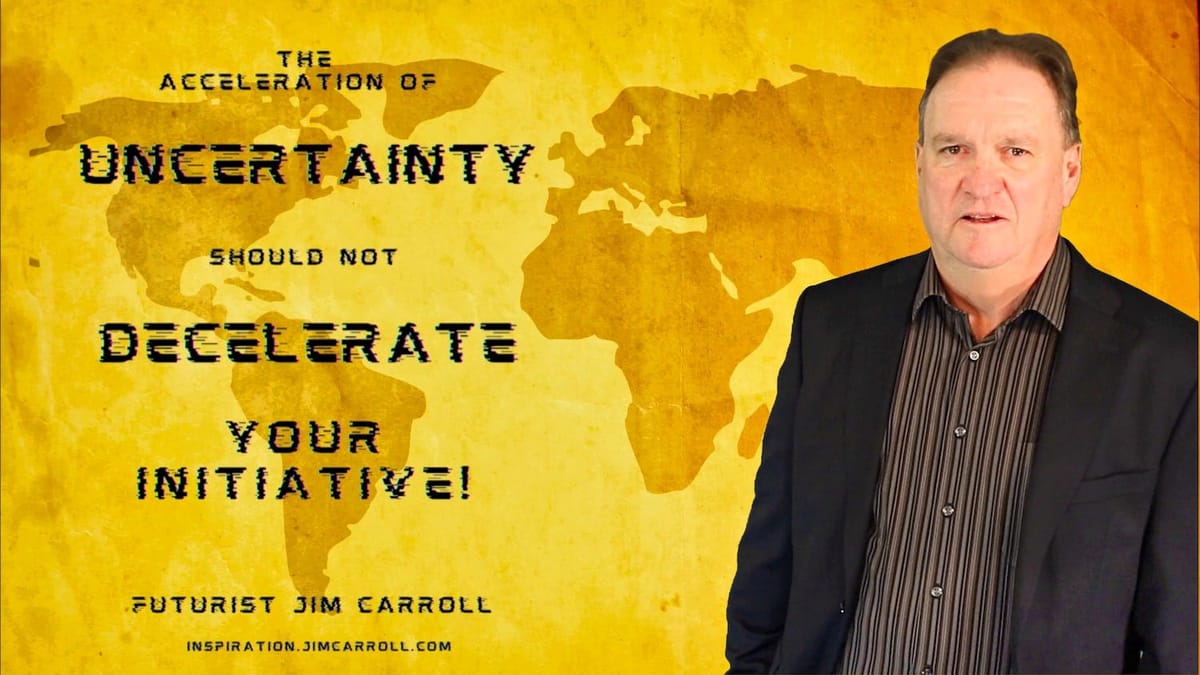How quickly our future can change!
Just a week ago, it seems, the world was in a different place. Russia was on the doorstep of the Ukrainian border, threatening the most ill-advised, illegal invasion since World War 2 - yet many of us were in disbelief that it might actually happen. At the time, global alliances were strained and evolving as the typical reality of volatile diplomacy was trying to determine how to best manage the threat. Hope for sanity prevailed.
One week later, the ruble is in free fall, Russian oligarchs are turning on Putin, and the Ukrainian President has turned into a global beacon of hope against tyranny. The Ukrainian people? An inspiration to all as they battle fiercely to achieve their hope. And yet another dramatic result - global alliances have changed. If Putin has done anything, he has managed to align most nations in the world into a new, grand coalition that is now acting aggressively against him. This is HUGE.
We do not yet know how this situation is going to turn out, and it might yet get worse.
But one thing is certain - we are now in a bubble of uncertainty, a storm of complexity, a cloud of volatility, an arena of ambiguity.
What do you do now? At a personal or corporate level, do what you can to assist Ukraine in the short term! While all of us have limited influence, we can individually provide to those we know the beacon of hope. Reach out to anyone you know who lives in the country to offer them your support, encouragement, and thoughts for the future. I did that yesterday with a PR executive I know who lives in Kyiv; she was working with me on a trends article but two months ago. I think that perhaps, in a small way, I managed to give her but a brief moment of hope from the outside world as the shelling was underway around her.
At the same time, stay focused on the medium and long-term future - at some moment in time, this crisis too will draw to an end. That's the key message I focused on with my clients during a similar period of uncertainty in 2002-3, again in 2008-09, and the same message holds true today. As I look back at my career, I've come to realize that I've been through many eras of uncertainty:
- the 1998 Asian currency collapse
- the 2000 dot.com meltdown
- the 2001 global telecom restructuring
- from 2001 to 2003, the impact of 9-11 and economic uncertainty
- 2007 to 2008, the march to $100 oil and the subprime collapse
From a long-term perspective, all of these eras were just another blip in the grand scheme of the churning engine that is the global economy. Through the next ten years, we'll see a few other economic challenges along the way; various regional economies and sectors will be impacted, yet innovation and growth will abound. That's why I've also indicated that a key leadership mantra for the high-velocity economy is this: "volatility is the new normal."
To innovate with uncertainty, don't let a short-term vs long-term trend disconnect take over your strategic thinking. In times like these, "aggressive indecision" can become a driving cultural and leadership trait. Organizations that fall into this funk fall behind. Innovative companies didn't permit that to happen then, and you shouldn't let this happen now.
So it really comes down to this: when do you innovate? Are you going to wait until you are comfortable that we're in a sustained period of economic recovery? That's a bad decision -- because economic volatility is the new normal. Everything we have learned from past periods of uncertainty is that the winners were those who decided that it was an important thing to keep moving ahead despite massive amounts of uncertainty.

